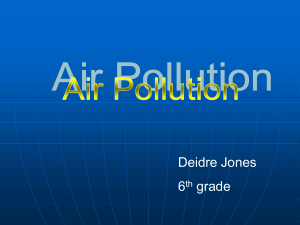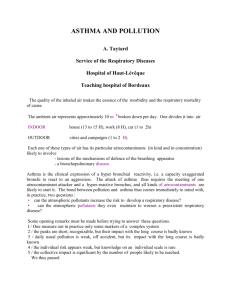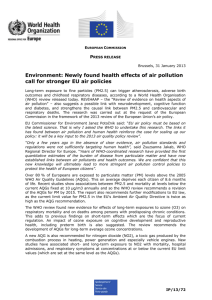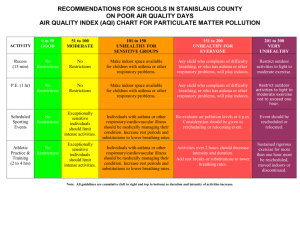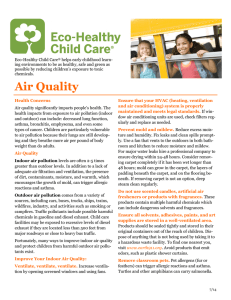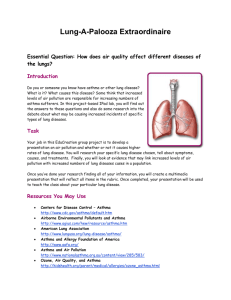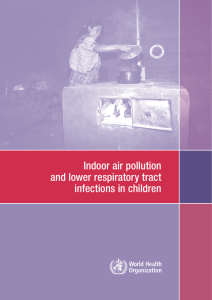Air Pollution and Allergic Airway Disease in India Handout
advertisement
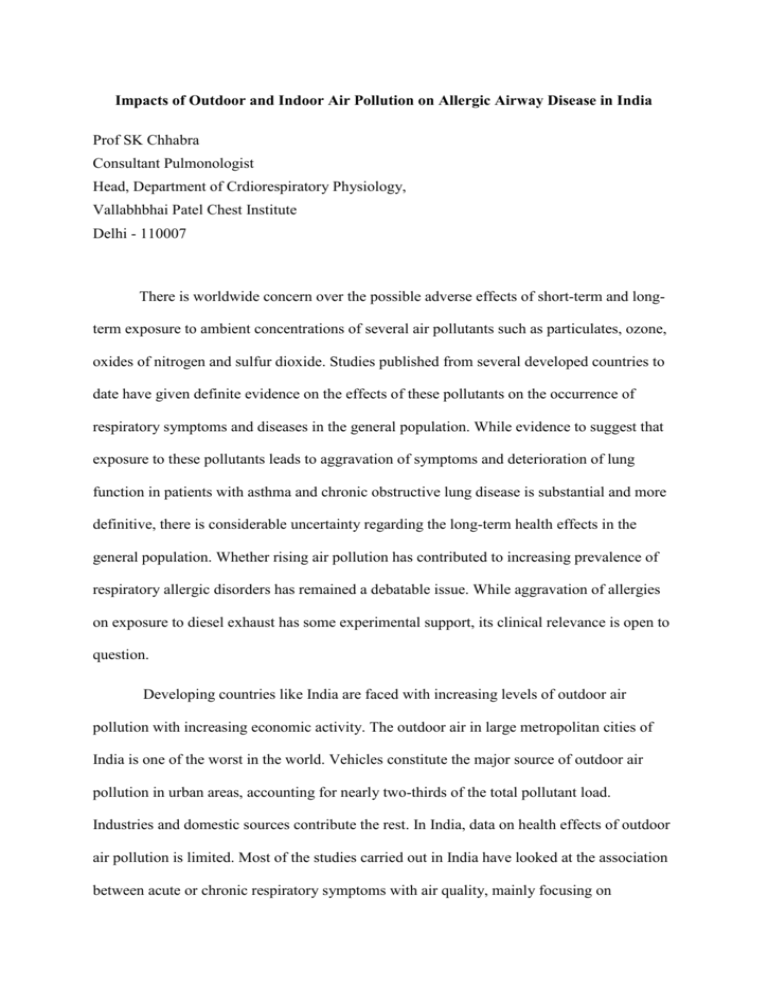
Impacts of Outdoor and Indoor Air Pollution on Allergic Airway Disease in India Prof SK Chhabra Consultant Pulmonologist Head, Department of Crdiorespiratory Physiology, Vallabhbhai Patel Chest Institute Delhi - 110007 There is worldwide concern over the possible adverse effects of short-term and longterm exposure to ambient concentrations of several air pollutants such as particulates, ozone, oxides of nitrogen and sulfur dioxide. Studies published from several developed countries to date have given definite evidence on the effects of these pollutants on the occurrence of respiratory symptoms and diseases in the general population. While evidence to suggest that exposure to these pollutants leads to aggravation of symptoms and deterioration of lung function in patients with asthma and chronic obstructive lung disease is substantial and more definitive, there is considerable uncertainty regarding the long-term health effects in the general population. Whether rising air pollution has contributed to increasing prevalence of respiratory allergic disorders has remained a debatable issue. While aggravation of allergies on exposure to diesel exhaust has some experimental support, its clinical relevance is open to question. Developing countries like India are faced with increasing levels of outdoor air pollution with increasing economic activity. The outdoor air in large metropolitan cities of India is one of the worst in the world. Vehicles constitute the major source of outdoor air pollution in urban areas, accounting for nearly two-thirds of the total pollutant load. Industries and domestic sources contribute the rest. In India, data on health effects of outdoor air pollution is limited. Most of the studies carried out in India have looked at the association between acute or chronic respiratory symptoms with air quality, mainly focusing on particulates. Specifically, the impact on respiratory allergies has received little attention. In recent years, air quality data shows increasing levels of oxidant pollutants, such as oxides of nitrogen and the secondary pollutant, ozone. So far, there have been no studies on the effect of ozone on respiratory allergies in human subjects in India. Recently, in a guinea pig model of asthma, it has been shown by the author that a two-hour daily exposure of sensitized animals to ambient concentrations of ozone potentiated the effect of allergens on the airways. More than half of Indian households use biomass fuels (crop residues, wood, cow dung) as energy sources for cooking, not only in rural areas but also in urban areas. The residents of these households face the additional problem of indoor air pollution that often exceeds outdoor pollution. Oxides of nitrogen are the other major component of the indoor air pollution. The effect of indoor air pollution on respiratory allergies has not been investigated in any detail although a few studies have looked at the prevalence of asthma in relation to use of biomass fuels, but with conflicting or equivocal results. While there have been several studies on the prevalence of asthma in children and adults, outdoor or indoor air quality has not been investigated as a risk factor. There is a need to conduct studies on the impact of current ambient air quality on the prevalence and clinical aspects of respiratory allergic disorders in India.



